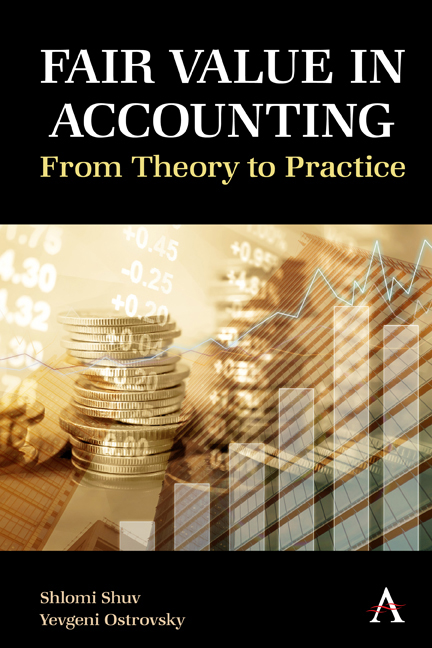Book contents
- Frontmatter
- Contents
- Preface
- Chapter 1 Background
- Chapter 2 Definition and Scope of Fair Value
- Chapter 3 Identifying the Asset or Liability to Be Measured
- Chapter 4 Determining the Market in Which the Transaction Will Take Place
- Chapter 5 Identifying Market Participants
- Chapter 6 Defining the Transaction Price
- Chapter 7 Definition of an Orderly Transaction
- Chapter 8 Fair Value at Initial Recognition
- Chapter 9 Application to Nonfinancial Assets
- Chapter 10 Measuring Fair Value of Liabilities and Equity Instruments
- Chapter 11 Application to Financial Instruments with Netting Positions
- Chapter 12 Valuation Techniques
- Chapter 13 Disclosure Provisions
Chapter 6 - Defining the Transaction Price
Published online by Cambridge University Press: 15 September 2022
- Frontmatter
- Contents
- Preface
- Chapter 1 Background
- Chapter 2 Definition and Scope of Fair Value
- Chapter 3 Identifying the Asset or Liability to Be Measured
- Chapter 4 Determining the Market in Which the Transaction Will Take Place
- Chapter 5 Identifying Market Participants
- Chapter 6 Defining the Transaction Price
- Chapter 7 Definition of an Orderly Transaction
- Chapter 8 Fair Value at Initial Recognition
- Chapter 9 Application to Nonfinancial Assets
- Chapter 10 Measuring Fair Value of Liabilities and Equity Instruments
- Chapter 11 Application to Financial Instruments with Netting Positions
- Chapter 12 Valuation Techniques
- Chapter 13 Disclosure Provisions
Summary
Exit Price
Fair value is the exit price, which is defined as the price that would be received to sell an asset or paid to transfer a liability. It is apparent from this definition that the exit price takes into account the perspective of the selling market participant, whereas the entry price, which is the price paid to buy an asset or the price received to assume a liability, takes into consideration the perspective of the buying market participant.
Certain International Financial Reporting Standards (IFRSs) (such as IFRS 3 or IFRS 9) stipulate that upon initial recognition, certain assets or liabilities should be measured at their fair value or based on their fair value. Similar provisions also exist within Accounting Standards Codification (ASC) 805 and ASC 815. In other words, for the purpose of measurement at initial recognition, the fair value is, in fact, calculated under the notional sale assumption. That is to say, the question of whether the reporting entity intends to hold the asset or the liability is irrelevant to the definition of fair value, which is measured under a sale assumption. The issue of the price that best represents the fair value was discussed during the development of IFRS 13 and ASC 820 in the context of selecting the entry price as a potential alternative to the definition of fair value upon initial recognition. Indeed, it was decided to reject this alternative, among other reasons, on the grounds that when the buying and selling are performed in the same market, in the same manner and on the same date, the exit price from the perspective of market participants equals the entry price (for more information, see Chapter 8). Nevertheless, the cases for which the exit price is not necessarily the price that best reflects the objective of the measurement were excluded from the scopes of IFRS 13 and ASC 820 (for more information, see Chapter 2, Sections 2.1– 2.4).
Transaction Costs
IFRS 13 and ASC 820 refer specifically to adjustments to the transaction price and stipulate that the price in the principal (or most advantageous) market used to measure the fair value of the asset or liability shall not be adjusted for transaction costs. In other words, the transaction price should not be reduced when the transaction involves an asset, and it should not be increased when the transaction involves a liability.
- Type
- Chapter
- Information
- Fair Value in AccountingFrom Theory to Practice, pp. 51 - 56Publisher: Anthem PressPrint publication year: 2022

